Here are some Indian musical instruments pictures with names. From left to right: Veena, Tanpura, Sahnai, Dholaki, Ghatam, and Sambal. You can see how these instruments are related to the Sitar in appearance and play. The dholaki is a popular instrument used during wedding ceremonies. It is derived from the coconut palm and mango trees. It is well-known for its vibrant beats and fun clapping. The Ravanahatha is believed to be the precursor of the violin, and dates back to the reign of King Ravana.
Veena
The Veena is a plucked string Indian musical instrument, commonly found in South India. It shares characteristics with the sarod and sitar. It is also considered a very auspicious instrument and is often depicted with the Hindu gods. The instrument’s shape resembles a double-dome, with two strings at each end. The strings are pluckable by using the right hand, which is also used to play the instrument.
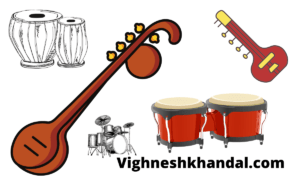
The Veena is usually four feet long, with a tapering hollow neck and large resonator. The string’s length is determined by its frequency, and the Veena is typically tuned to half its characteristic frequency for maximum tone output. The Veena’s fretboard contains 24 brass frets. The instrument’s bridge is made of resin, and the strings are held in place by two pieces of animal horn.
The Veena is a string instrument similar to the harp, and there are several varieties of this instrument. The oldest form was closer to the harp, and there are cave temple reliefs of musicians playing the lute and zither. Even the early Indian sculptures depict musicians playing the veena. But it was not until the second millennium CE that a musical instrument with seven strings began to gain popularity.
In addition to its musical qualities, the Veena has a spiritual significance in Hindu mythology. The instrument’s sound is believed to activate the chakras of the human body, which help heal the organ sites. Furthermore, Veena music stimulates the energy centers throughout the body, allowing the baby to develop its hearing senses in the womb. The sound produced by the Veena is said to bring about mental peace, physical growth, and greater understanding.
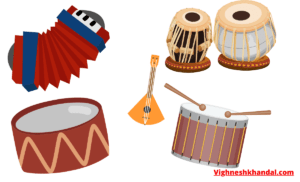
Tanpura
Indian musical instruments come in a variety of shapes, sizes, and names. Listed below are some common instruments and their names. The Indian Tanpura is the most common percussion instrument and is played by both male and female musicians. Its name is derived from the Persian word “Tanpura” or “three strings.” It was first used in India in the mid-19th century. The Sarangi is a beautiful instrument with a sound that resembles the human voice.
The sarod is another instrument that is played by a soloist. This instrument is made of wood and has low and high pitches. Its sound is similar to that of a continuous humming and is a member of the string family. The sarod is a combination of two ancient Indian instruments, the tanpura and the sursingar, with the former being larger and producing deeper tones.
The sarangi is another instrument that is commonly represented in Indian iconography. Its name is derived from a Persian word meaning “three strings,” and the instrument also goes by the names bin and rudravina. Like the sitar, the tanpura varies in size, with one instrument being calabash-shaped. Depending on the type, the instrument can be anywhere from six to twenty-one strings.
Sahnai
The sarod is an important instrument in Indian music. This fretless, stringed instrument is similar to a sitar, but has a longer neck and fewer strings. It produces a deep, melodious sound. The sarod’s name comes from the Persian word saram, which means “melody.” The sarod has between 17 and 25 strings and is similar to a lute. Other Indian instruments include the dholak and the sarod.
The shehnai is usually made of wood and features a metal flare at the end. It is played in concerts, processions, and temples and was traditionally used in royal court ensembles. It is reminiscent of the snake charmer instrument pungi, and has eight or nine holes for the fingers. The instrument requires tremendous breath control to play. Its sound is said to create auspiciousness, and it is widely used in wedding ceremonies.
The sahnai has its roots in the prehistoric times of the Hela community in Rajasthan. The instrument features a coconut hollow, a goatskin covering, and a bamboo stick. It has two strings, one of which is made of steel, the other made of horse hair. The bow is made of hair and is sometimes adorned with bells. Sahnai instruments are played by women.
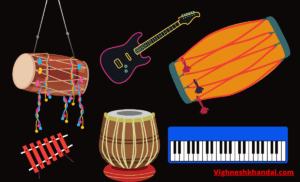
Sahnai Resembles Sitar
The Sahnai is a bowed, plucked string instrument. It is used primarily in Hindustani classical music. It is similar in appearance to the Sitar, though the instrument is played with a different technique. Its base is smaller, and it resembles the shape of a tortoise. Historically, this instrument was also called Kachchawa, but that name has since been given to a different version of the Sitar. The instrument is played vertically.
The fingerboard of the Sahnai is three feet long, hollow and deeply concave. It has a series of metal frets secured with gut. The instrument originally had only three strings, but today has seven. The remaining strings are used as a drone or to provide rhythmic accompaniment. The Sitar is the most popular musical instrument in India. It has been played by artists such as Ravi Shankar and Anoushka Shankar, and is considered the national instrument of India.
The Sahnai resembles the Sitar in terms of shape and tuning. Both instruments have gourd resonators, and the musicians prefer to call it a tanpura. However, the lesser-known tanpura is used by musicians in the Carnatic tradition. Its distinctive sound makes it a distinctive musical instrument. Performing a traditional Indian raga involves tuning the strings to the melody.
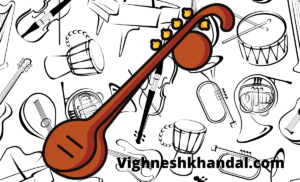
Nagasvaram
You may be surprised to know that there are a number of different types of Indian musical instruments. While some are well known, others are more obscure. Here are some examples of the various instruments, as well as their names and pictures. This article will look at the main types and their names. You may also find the instruments’ pictures and names helpful if you’re looking for a more detailed explanation. If you’re interested in playing the instruments, it will also help to know their origin.
The first type of Indian musical instrument is the bansuri, a bamboo stick with six to seven finger holes. This instrument is very popular in India, and it is associated with marriage, as shehnai is played at weddings to celebrate an auspicious day. Another instrument is the mridangam, an important musical instrument in Southern India. It has captivating beats and is distinguished by its left hand being larger than its right.
Another type of Indian musical instrument is the sarangi, which is a plucked string instrument with similarities to the sitar and sarod. Its use in Hindustani music stretches across the country, but it has also gained popularity in Sri Lanka and Pakistan. The sarangi’s bridge is supported by up to forty strings, with the main three being thicker. The instrument was traditionally made of goat’s intestine, though it is now quite rare.
Nagasvaram is a Double reed Instrument
The nagasvaram is an ancient double reed instrument with a rich musical history in India. It has been played for hundreds of years and is a staple of southern Indian musical traditions. It is also played in Hindu temples and other sites throughout the world. Players of the instrument are typically born into low non-Brahmin castes. In fact, the instrument was first called the ‘thira melam’, after the musician, who was recruited from his caste.
The nagasvaram is traditionally played standing, but is also performed seated. It is held at a 45-degree angle to the horizontal by both hands. One hand covers the top three fingerholes while the other covers the bottom four. The double reed is attached to a metal staple inserted into the lower half of the ebony wood body. The reed end is small, while the bell end is slightly larger.
The nadaswaram is similar to the shehnai, but is slightly larger. It has a double reed and is considered an auspicious instrument in South India. It is normally accompanied by other instruments such as the ottu, tavil, and sur peti. It is often used by singers to perform traditional Hindu songs.

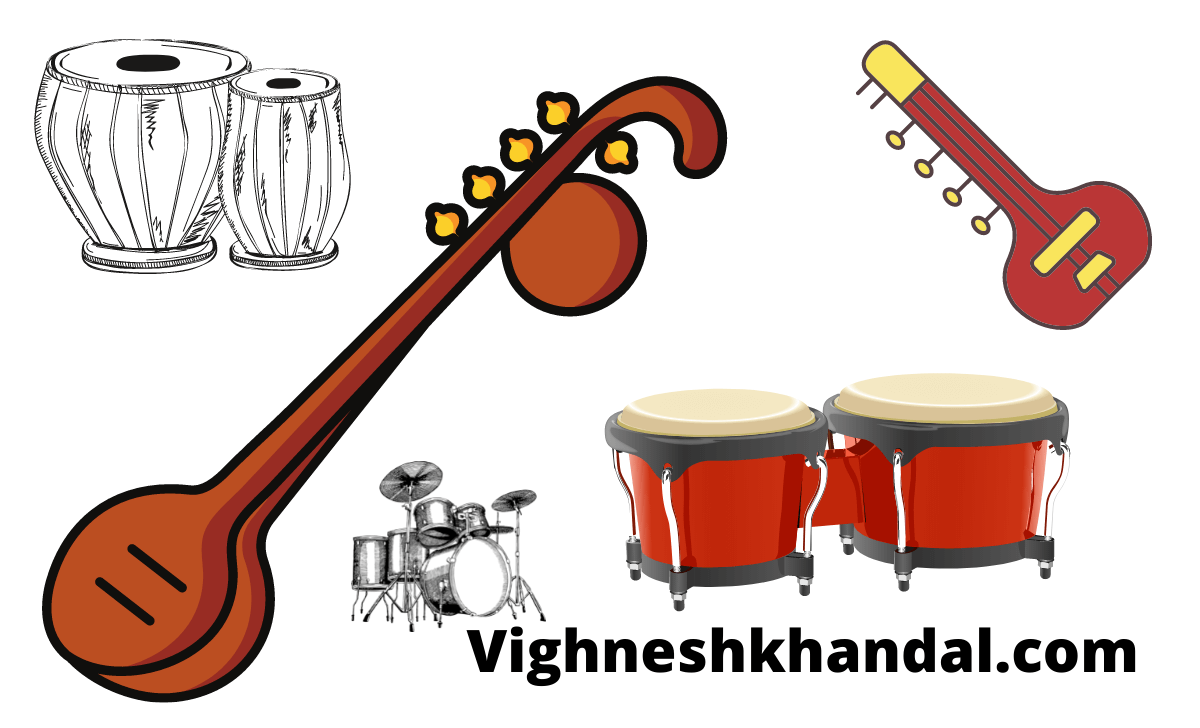

Cheers.